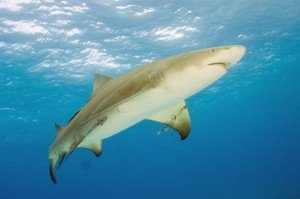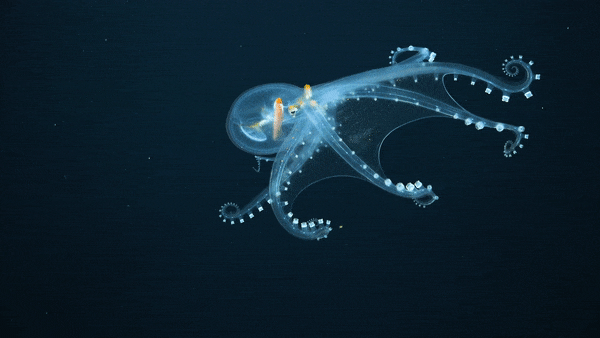'fairies Dont Exist' WRONG❗❗cyerce Elegans
'fairies dont exist' WRONG❗❗cyerce elegans




More Posts from Offishialghostieaccount and Others
How about the Port Jackson and its adorable smile! I think more people should know about it!
Love your blog! 🦈💖
Thank you so much!
Port Jackson Shark // Heterodontus portusjacksoni

These cute sharks grow to be approximately 1.65 m (5.4 ft) and are found exclusively in the waters of southern Australia. The conservation status for these sharks is unknown, but their eggs have a high mortality rate (only about 11-22% survive) because of high predation.

Unlike a lot of sharks, the Port Jackson shark doesn't have a mouthful of sharp, pointy teeth. They have a front row of small, pointed teeth that lead to wide, flat teeth in the back. These teeth are handy for catching and then breaking the shells of mollusks and crustaceans.

Apparently the Congo river is deep enough that there are several species of fish with cavedwelling adaptations (near-total to total blindness, loss of pigmentation, etc) because light doesn't reach where they live. the fuck





There are three morphologies of dorsal fins: nearly divided, continuous, and clearly divided.
Ichthyology Notes 1/?
I'd love some lemon shark facts 💛


Lemon Shark or Negaprion brevirostris
They get their name from their yellowish brown coloring. Lemon sharks, unlike the lone-shark stereotype, enjoy hanging out in groups! They even have preferred individuals to hang out with!

Lemon sharks are also one of the most well-understood shark species and this is because they do well in captivity. Additionally, most of our knowledge of shark physiology and biology stems from studies of lemon sharks!
Unfortunately, this species is nearly threatened; this is mostly due to overfishing. They're not only caught as bycatch, but are a target for some fisheries. Their meat, skin, and squalene are used for human consumption. It's estimated that between 70-90% of shark squalene harvested each year is used in cosmetics. (Make sure to do your research before buying makeup). To harvest the amount of squalene used for our consumption, almost 3 million sharks are killed every year. But there's a great new alternative source that's gaining traction: olives!

There are four types of fish scales!
Cycloid scales are thin, overlap, and flexible. They're found on primitive teleosts (like minnows and carp).
Ctenoid scales have small, backwards pointed scales (known as cterns) make the fish more hydrodynamic and faster. They're found on Advanced Ctenoids (like perch and sunfish).
Ganoid scales are thick, diamond-shaped, and mostly non-overlapping. They're found on Chondrostei (like sturgeons and paddlefish).
Placoid scales are spikey and tooth-like with nerves. These are found on Chondrichthyes (like sharks and rays).
Ichthyology Notes 3/?

apparently this is a thing so i drew myself on it @kiraprismart should i be tagging you?
"were going to sleep in ten minutes" no
The wonderful Glass Octopus. Living at depths of around 3000 ft and only being about a foot long, these strange little creatures are rarely seen by scientists.



hi
what's this one cause I have questions

1; is it edible
2: fun facts about it
THAMK YOU
That is a flying gurnard (Dactylopterus volitans)!

To answer your first question, they are edible! They're steadily becoming a more popular food choice because they have a relatively low oil content.


The first thing you might notice about this species is their very large pectoral fins. It's believed that their primary use is to scare off predators. Often the fish rest on the seafloor with the large fins tucked in, only displaying them when threatened. Additionally, they have finger-like segments of their pectoral fins which they use to walk across the sea floor.
These fish can also make noises! Using their swim bladder and jaw, they can make a grunt-like sound believed be used to scare off predators or communicate with each other.
-
 jojogyn liked this · 2 weeks ago
jojogyn liked this · 2 weeks ago -
 mossyblossom reblogged this · 2 weeks ago
mossyblossom reblogged this · 2 weeks ago -
 mossyblossom liked this · 2 weeks ago
mossyblossom liked this · 2 weeks ago -
 viopolis reblogged this · 2 weeks ago
viopolis reblogged this · 2 weeks ago -
 fishandmemes reblogged this · 2 weeks ago
fishandmemes reblogged this · 2 weeks ago -
 stingrayyyylover liked this · 2 weeks ago
stingrayyyylover liked this · 2 weeks ago -
 fuschiaflowers liked this · 2 weeks ago
fuschiaflowers liked this · 2 weeks ago -
 hon-yu reblogged this · 2 weeks ago
hon-yu reblogged this · 2 weeks ago -
 hon-yu liked this · 2 weeks ago
hon-yu liked this · 2 weeks ago -
 onceuponaladye reblogged this · 2 weeks ago
onceuponaladye reblogged this · 2 weeks ago -
 vampire-loving-vampire liked this · 2 weeks ago
vampire-loving-vampire liked this · 2 weeks ago -
 m3ttacin3 reblogged this · 2 weeks ago
m3ttacin3 reblogged this · 2 weeks ago -
 m3ttacin3 liked this · 2 weeks ago
m3ttacin3 liked this · 2 weeks ago -
 octoberwhore reblogged this · 2 weeks ago
octoberwhore reblogged this · 2 weeks ago -
 keytobernadette liked this · 2 weeks ago
keytobernadette liked this · 2 weeks ago -
 poogieparadinium liked this · 2 weeks ago
poogieparadinium liked this · 2 weeks ago -
 wherethestoryhasimagination liked this · 2 weeks ago
wherethestoryhasimagination liked this · 2 weeks ago -
 spacebuggorez liked this · 2 weeks ago
spacebuggorez liked this · 2 weeks ago -
 mysteryf1sh liked this · 2 weeks ago
mysteryf1sh liked this · 2 weeks ago -
 chronicllchill liked this · 2 weeks ago
chronicllchill liked this · 2 weeks ago -
 falloutboyyaoi reblogged this · 2 weeks ago
falloutboyyaoi reblogged this · 2 weeks ago -
 frogn0sis liked this · 2 weeks ago
frogn0sis liked this · 2 weeks ago -
 sharksimulator64 reblogged this · 2 weeks ago
sharksimulator64 reblogged this · 2 weeks ago -
 bluephoric liked this · 2 weeks ago
bluephoric liked this · 2 weeks ago -
 deepbluedancing liked this · 2 weeks ago
deepbluedancing liked this · 2 weeks ago -
 deepbluedancing reblogged this · 2 weeks ago
deepbluedancing reblogged this · 2 weeks ago -
 takato1993 liked this · 2 weeks ago
takato1993 liked this · 2 weeks ago -
 platypus-brained reblogged this · 2 weeks ago
platypus-brained reblogged this · 2 weeks ago -
 platypus-brained liked this · 2 weeks ago
platypus-brained liked this · 2 weeks ago -
 sunfl0wer-h0ur liked this · 2 weeks ago
sunfl0wer-h0ur liked this · 2 weeks ago -
 yanpear liked this · 2 weeks ago
yanpear liked this · 2 weeks ago -
 jinx-you-lose liked this · 2 weeks ago
jinx-you-lose liked this · 2 weeks ago -
 ienene liked this · 2 weeks ago
ienene liked this · 2 weeks ago -
 california-girl28-blog liked this · 3 weeks ago
california-girl28-blog liked this · 3 weeks ago -
 robyn-of-hyrule liked this · 3 weeks ago
robyn-of-hyrule liked this · 3 weeks ago -
 offishialghostieaccount reblogged this · 3 weeks ago
offishialghostieaccount reblogged this · 3 weeks ago -
 larissa-the-scribe liked this · 3 weeks ago
larissa-the-scribe liked this · 3 weeks ago -
 limoncats liked this · 3 weeks ago
limoncats liked this · 3 weeks ago -
 iwannabeyourdog2 reblogged this · 3 weeks ago
iwannabeyourdog2 reblogged this · 3 weeks ago -
 colorpenciled liked this · 3 weeks ago
colorpenciled liked this · 3 weeks ago -
 ssjkamui-digitalphoenixug liked this · 3 weeks ago
ssjkamui-digitalphoenixug liked this · 3 weeks ago -
 wildflowershrub liked this · 3 weeks ago
wildflowershrub liked this · 3 weeks ago -
 cutelovebird reblogged this · 3 weeks ago
cutelovebird reblogged this · 3 weeks ago -
 cutelovebird liked this · 3 weeks ago
cutelovebird liked this · 3 weeks ago -
 lycorislace liked this · 3 weeks ago
lycorislace liked this · 3 weeks ago -
 cozmicbat liked this · 3 weeks ago
cozmicbat liked this · 3 weeks ago -
 randomishfindingsofalonepotato reblogged this · 3 weeks ago
randomishfindingsofalonepotato reblogged this · 3 weeks ago -
 tea4ts reblogged this · 3 weeks ago
tea4ts reblogged this · 3 weeks ago -
 bestprocrastinator reblogged this · 3 weeks ago
bestprocrastinator reblogged this · 3 weeks ago -
 raeyapper liked this · 3 weeks ago
raeyapper liked this · 3 weeks ago

she/they18 internally - bodily a minorprofile picture by kiraprismartbanner by fanny-hs
21 posts
